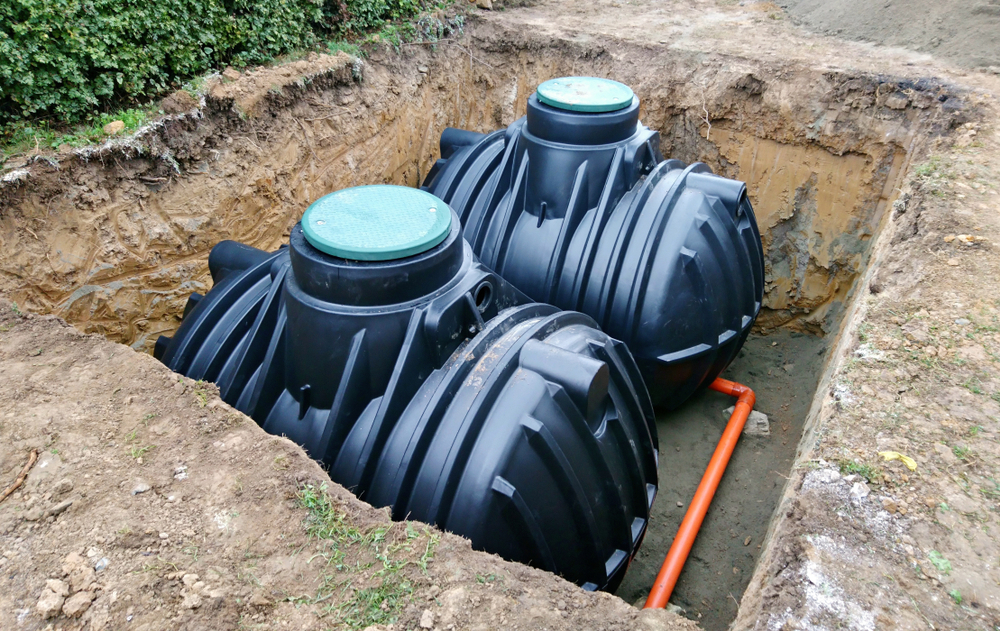
Rainwater harvesting is an ancient practice of collecting and storing rainwater for later use. In the UK with recent hosepipe bans, rainwater harvesting could be a clever solution to help us save water. It is estimated to save over 35,000 litres of mains water per year per household. With the increase of water bills and the risk of droughts, rainwater harvesting is becoming an important source of alternative water supply in the UK.
In this article, we’ll explore the benefits and advantages of rainwater harvesting in the UK in more detail.
Benefits and Advantages of Rainwater Harvesting
1. Reducing Water Bills:
Water bills in the UK are increasing rapidly, and by using rainwater, homeowners and businesses can supplement or replace mains water, leading to a reduction in their water bills. Harvested rainwater can be used for non-potable purposes such as flushing toilets, washing clothes, watering plants, and cleaning, leading to a significant reduction in water bills.
2.Conserving Water Resources:
The UK has faced water shortages in recent years, and this trend is likely to continue due to the changing climate. Harvesting rainwater reduces the demand for mains water and helps to conserve water resources, ensuring there is enough water for everyone. With the rising demand for water, rainwater harvesting can be a sustainable solution to water management.
3. Reducing Flood Risks:
In urban areas, rainfall often leads to flooding due to impermeable surfaces such as roads and buildings. Rainwater harvesting systems can help to reduce the risk of flooding by capturing rainwater and storing it for later use. This reduces the amount of water that flows into drains and sewers, which can cause overflow and flooding.
4.Improving Water Quality:
Rainwater is generally of higher quality than mains water since it has not been treated with chemicals such as chlorine. Harvested rainwater can be used for a variety of non-potable purposes, including watering plants and gardens, which can lead to improved plant growth and yields.
5. Reducing Carbon Footprint:
Rainwater harvesting can help to reduce the carbon footprint of a property by reducing the amount of energy needed to treat and pump water from mains sources. The energy used to pump and treat mains water is often generated by fossil fuels, which contribute to greenhouse gas emissions. Harvesting rainwater can help to reduce the need for this energy, which can lead to a reduction in carbon emissions. The UK government’s Code for Sustainable Homes recommends that all new builds incorporate a rainwater harvesting system to help reduce water consumption and increase sustainability.
6. Providing a Backup Water Source:
During periods of drought, hose pipe bans and water shortages, mains water supplies may be restricted or cut off entirely. Rainwater harvesting systems provide a backup water source, ensuring that homeowners and businesses have access to water during these times. This can be particularly useful for businesses that rely on water for their operations, such as farms or vineyards. Rainwater harvesting is a popular practice in the UK’s agriculture sector, where it is used for crop irrigation, livestock drinking water, and other farming activities.
7. Promoting Sustainability:
Rainwater harvesting promotes sustainability by reducing the reliance on mains water and conserving water resources. It is an environmentally friendly and sustainable practice that can help to reduce the impact of human activities on the environment. The UK’s National Trust has implemented rainwater harvesting systems in many of its properties, helping to reduce mains water usage and promote sustainability.

Installation Costs
The installation costs of a rainwater harvesting system can vary depending on the size, complexity, and type of system installed. Simple systems that collect rainwater for use in gardens can be relatively inexpensive. Something like a water butt for the garden can cost between £70 to £80. This would recover its cost over a period of roughly 18 months, when used to water the garden.
While more complex systems that provide water for non-potable indoor use can be more expensive. A high-spec rainwater harvesting kit can cost between £2,000 and £3,000 and will take longer to regain its costs, roughly 10 years, for an average domestic house with a water bill of £500-£600 per year. A professional installation that is placed below ground could double the cost and extend the return on investment time.
Despite the initial cost, rainwater harvesting can be a cost-effective long-term solution to water management, as it can lead to significant savings on water bills over time. Furthermore, some local authorities and water companies offer incentives or rebates to encourage rainwater harvesting, which can help to offset the installation costs.
References
- (2021). Rainwater . Retrieved from
- UK. (2010). Code for Sustainable Homes: Technical Guide. Retrieved from
- Environment Agency. (2016). Domestic Use. Retrieved from
- The Green Age. (2021). What is it and How Does it Work? Retrieved from
- National Farmers’ Union. (2017). Retrieved from
- National Trust. (2021). Retrieved from
- UK. (2016). Water Use in the Food and Drink Industry. Retrieved from
- The Royal Horticultural Society. (2021). Rainwater Harvesting. Retrieved from
